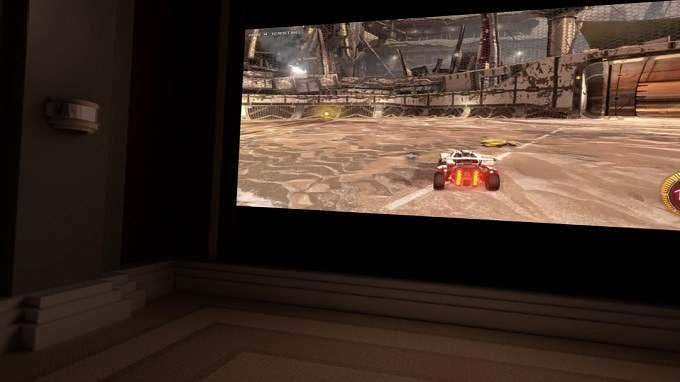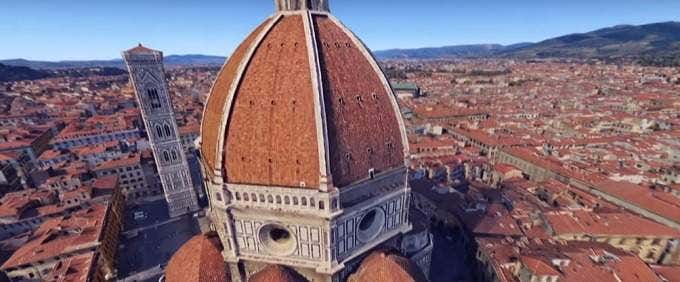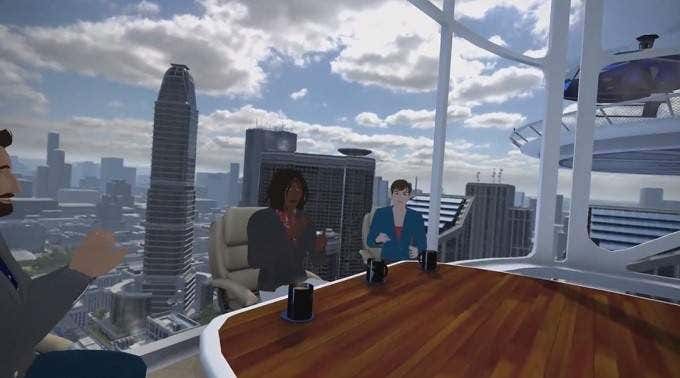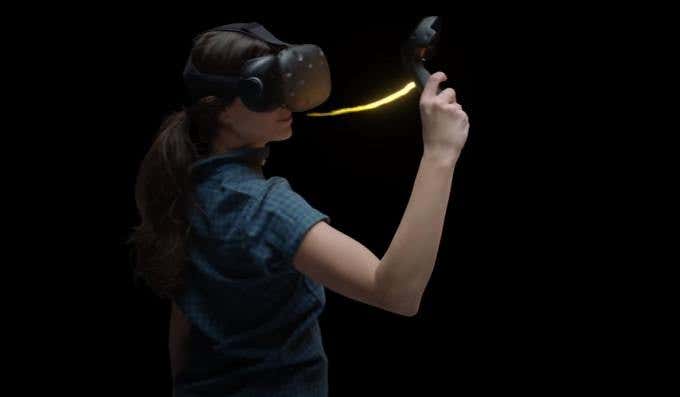Virtual reality is finally good. If you lived through the VR technology of the 90s, that’s something you may never have expected to hear. However, if you own any current generation VR gear, you’ll know that there’s plenty of AAA fun to be had in virtual spaces.
VR gaming in particular has really taken off, which might lead to the impression that this is all that VR is good for. However there are some nifty applications out there that makes use of VR technology for something other than innovative gaming experiences.
From actual useful utilities to educational experiences to art. There’s a VR app for just about everything. These five VR applications are perfect examples of how VR can be used for much more than video games.
Virtual Desktop for Oculus Go

The Oculus Go is a standalone, self-contained VR headset from Facebook-owned Oculus. Many applications that were originally designed for the tethered Oculus Rift have been ported in one form or another to the Go.
One popular application is Virtual Desktop. Basically, it puts you into a virtual space and then replicates your desktop displays within that space. There’s a lot of reasons to do this.
For one, it’s a great way to work in private without distraction or shoulder surfing. It also means you aren’t constrained by your physical monitors. Have as many as you want, in any arrangement and at any size. VR desktop software also lets you watch VR content like 360-degree YouTube videos natively.
Bringing the software to an untethered VR headset really opens up possibilities. Use it with a Bluetooth mouse and keyboard and you can bring your desktop with you anywhere in your home, within reach of the WiFi. You can also the software over an internet connection from anywhere in the world, but obviously latency and bandwidth become factors to consider.
Get it here.
Google Earth VR

Google has done a lot to digitize and map our planet. From satellite images in Google maps to Google Street View, you can see an amazing amount of the world from the comfort of your chair.
The apex of all this geographic data capture is certainly Google Earth, which doesn’t get that much attention these days. So you might be surprised to hear that Google Earth has a full-on VR version, compatible with both the Oculus Rift and HTC Vive.
Using advanced photogrammetry and 3D rendering tech, Google Earth VR lets you fly around the world, looking down into cities, soaring through canyons and experiencing the world as some sort of titanic god. The imagery on offer here is really an impressive achievement and it’s a fantastic educational tool, even if you don’t opt for the VR version.
Get it here.
vTime

One of the best things about modern VR is something called “presence”. That’s the sensation you get when your brain thinks you really are wherever the VR world tells you. It means you perceive the virtual objects around you as really there, which includes virtual people.
This means social VR apps have the potential to bring us a whole new social experience online. vTime is one of the most impressive examples of this VR app type. It’s a cross-platform application that lets people use VR and traditional 2D devices to hang out with each other seamlessly. They refer to it as a “cross-reality” platform, which essentially means people in the same virtual space will have different experiences.
Those spaces are pretty nice too. From tropical islands to cosy fireplace lounges, vTime makes a space for you to be with other human beings. Albeit in the form of cartoony avatars.
While the effect may not be all that impressive using something other than VR, the surprising feeling of presence with a headset when using social apps like these really make you feel like this is something special.
Get it here.
Henry

While VR uses plenty of technologies that we already know, it’s actually a properly new medium. Which means people still have to figure out how to tell stories effectively using it.
Unlike a film frame, you can’t take total control over what the viewer sees or pays attention to. So creators have to invent new ways to subtly and effectively give people the experience they intended when making their content.
Henry, a VR animated short, is currently the best example of how to tell a story in VR. It’s a showcase title for the Oculus Rift, Oculus Go and Gear VR. Expertly rendered and designed, with Hollywood-levels of production quality, Henry shows what’s possible with VR and has yet to be topped.
The story itself is pretty charming, but it’s just as important as a technical and artistic milestone and showcase. If you own the right VR gear and have never seen Henry, that’s something you need to rectify right away.
Get it here.
Tilt Brush

VR has been promoted mainly as a way to consume things that other people have created. Whether it’s a VR video, game or other interactive piece of software. Google looked at it from another perspective and instead created a tool that allows you to use the unique attributes of VR to make content instead.
Tilt Brush is available for the Vive, Oculus and Windows Mixed Reality headsets. It’s a painting tool that works in three dimensions. Or perhaps it’s a VR 3D modelling tool that works with brushes. Really, you’ll have to re-evaluate how you think about things for it to really make sense.
Even if you don’t want to make your own creations, you can explore the works of others in VR, as they are meant to be seen. It’s a whole new way to approach art, and it is glorious.
Get it here.
VR – More Than Meets the Eye
As with any new medium, creators and developers are still exploring what’s possible. It took decades from TV’s mainstream adoption to the pinnacle of modern day television.
Proper, practical VR has only been around since around 2016, so seeing such a diversity of apps already bodes well. So if you’re a little burnt out on VR games, there’s no reason for that headset to gather dust. There’s plenty more to do!